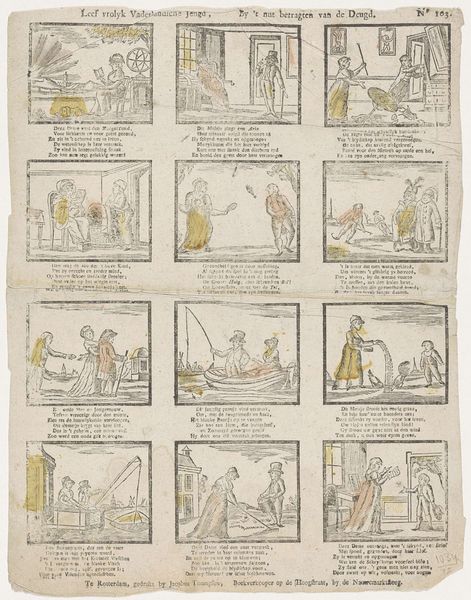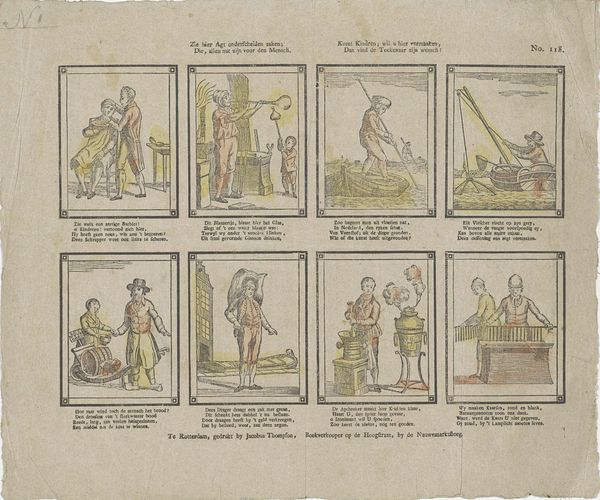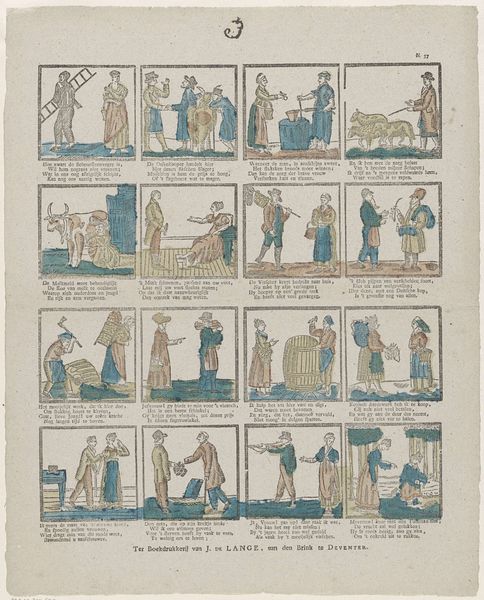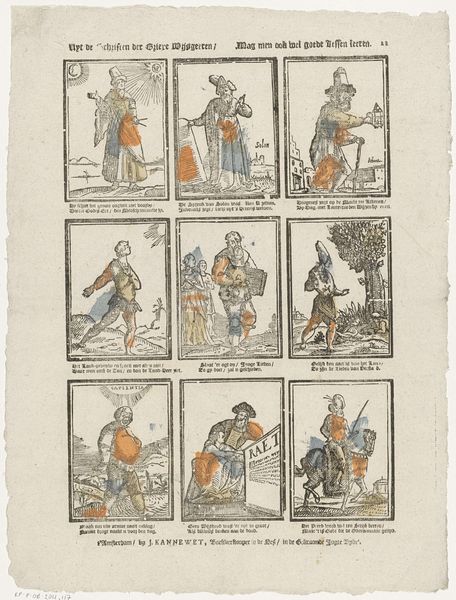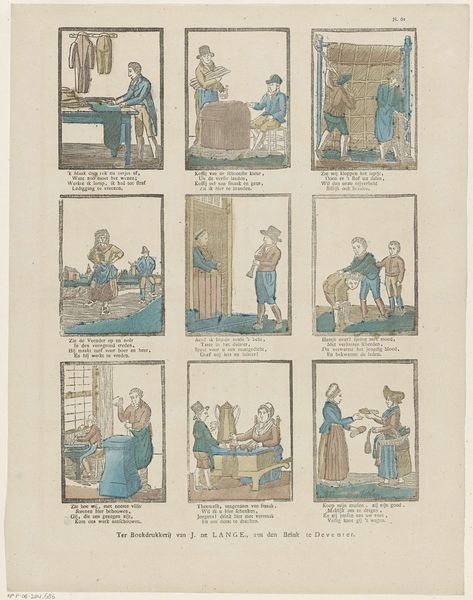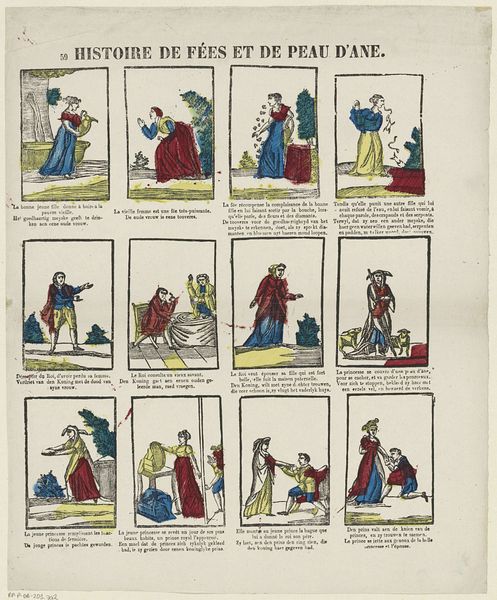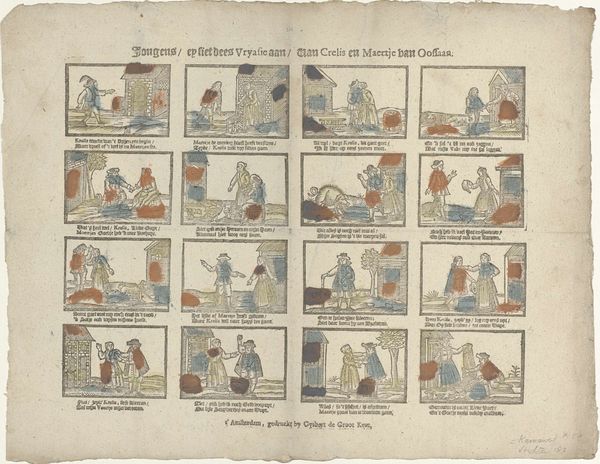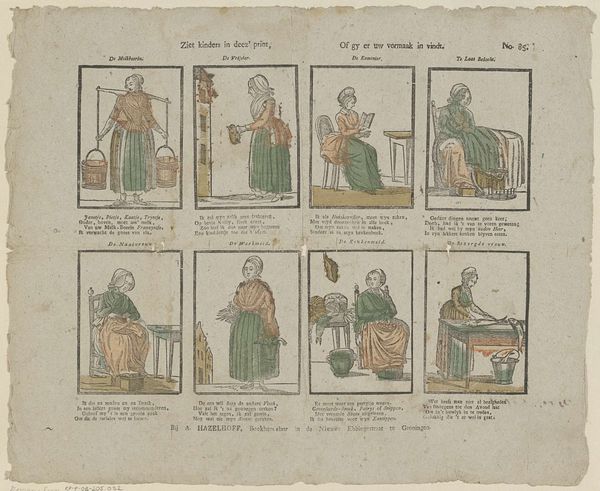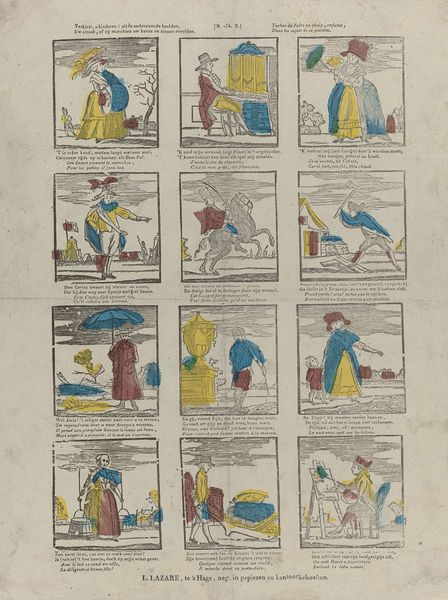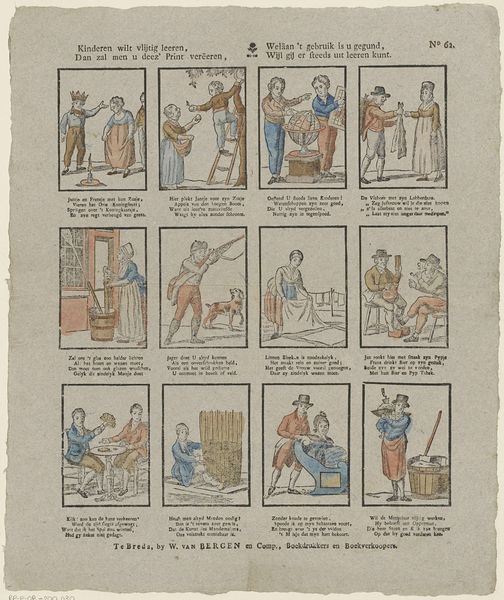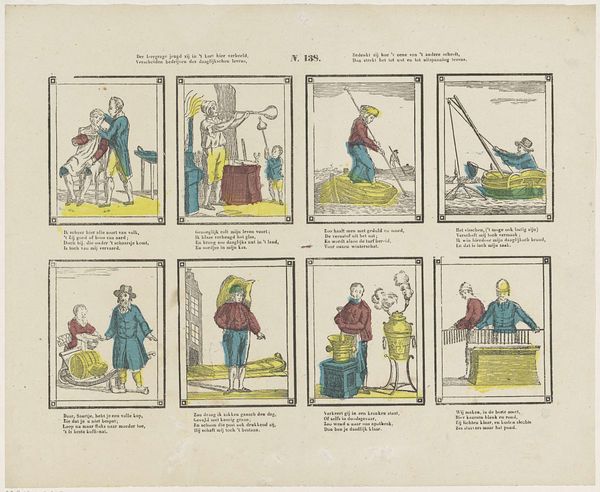
print, woodcut
#
narrative-art
# print
#
folk-art
#
woodcut
#
genre-painting
Dimensions: height 416 mm, width 332 mm
Copyright: Rijks Museum: Open Domain
Editor: So, we're looking at "Verschillende figuren," or "Different Figures," a woodcut print from somewhere between 1822 and 1849, attributed to Alexander Cranendoncq, currently held in the Rijksmuseum. It’s quaint, almost like a sheet of little vignettes from everyday life. What is your reading of this piece? Curator: Well, it’s important to consider prints like these within the context of the rise of print culture and popular imagery. This isn’t high art in the traditional sense, but rather a form of visual communication aimed at a broad audience. Each frame represents a different trade or pastime of Dutch life during the period. Editor: That makes sense. The way the images are segmented and labeled with text reminds me a bit of those children’s primers from that time period, though there's no specific narrative here. Curator: Precisely! This piece belongs to a wider network of visual folk traditions. Notice the crude style. Its simple production would have made this more affordable and accessible, circulating ideals and perhaps, instructing social values. What can you deduce about that period and how common folk were perceived back then by looking at each small figure? Editor: The limited color palette makes the scenes feel... approachable. They're not trying to overwhelm you with realism, but rather convey just enough information. I hadn't really thought about these as a vehicle for distributing values or ideologies back then. Curator: Think of this as a form of social inscription. The figures, the activities, even the dog listening to the violin – these are all staged to affirm certain values and normalize roles within that society. So much for only folk art at play, no? Editor: Definitely gives me something to chew on, thinking about the messages that are embedded within everyday art forms!
Comments
No comments
Be the first to comment and join the conversation on the ultimate creative platform.


